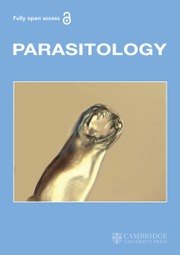Article contents
Observations on the blood in East Coast Fever of Cattle
Published online by Cambridge University Press: 06 April 2009
Extract
(1) There is very little, if any, abnormal destruction of erythrocytes in cases' of infection with East Coast Fever. This is proved by blood counts, haemoglobin estimations, and the condition of the bloodforming and blood-destroying organs, all remaining practically normal. This is in marked contrast to what obtains in piroplasmosis.
(2) The hypothesis advanced by Nuttall fits all the facts. According to this hypothesis the invasion of the corpuscles occurs in the internal organs where the parasites develop, and the corpuscles only act as carriers of the parasites in the blood, thereby conveying them to the tick which serves as the vector.
(3) Since few, if any, of the corpuscles are destroyed they rapidly become charged with an increasing number of parasites which are being continuously produced in the internal organs as evidenced by Koch's blue bodies which form and break up in the lymphatic glands, spleen, liver, bone-marrow, etc. (Gonder, Nuttall).
(4) There is a marked leucopenia in East Coast Fever, the polymorphs decreasing less rapidly than the other elements. This is in contrast with the leucocytosis observable in piroplasmosis.
- Type
- Research Article
- Information
- Copyright
- Copyright © Cambridge University Press 1916
- 3
- Cited by


